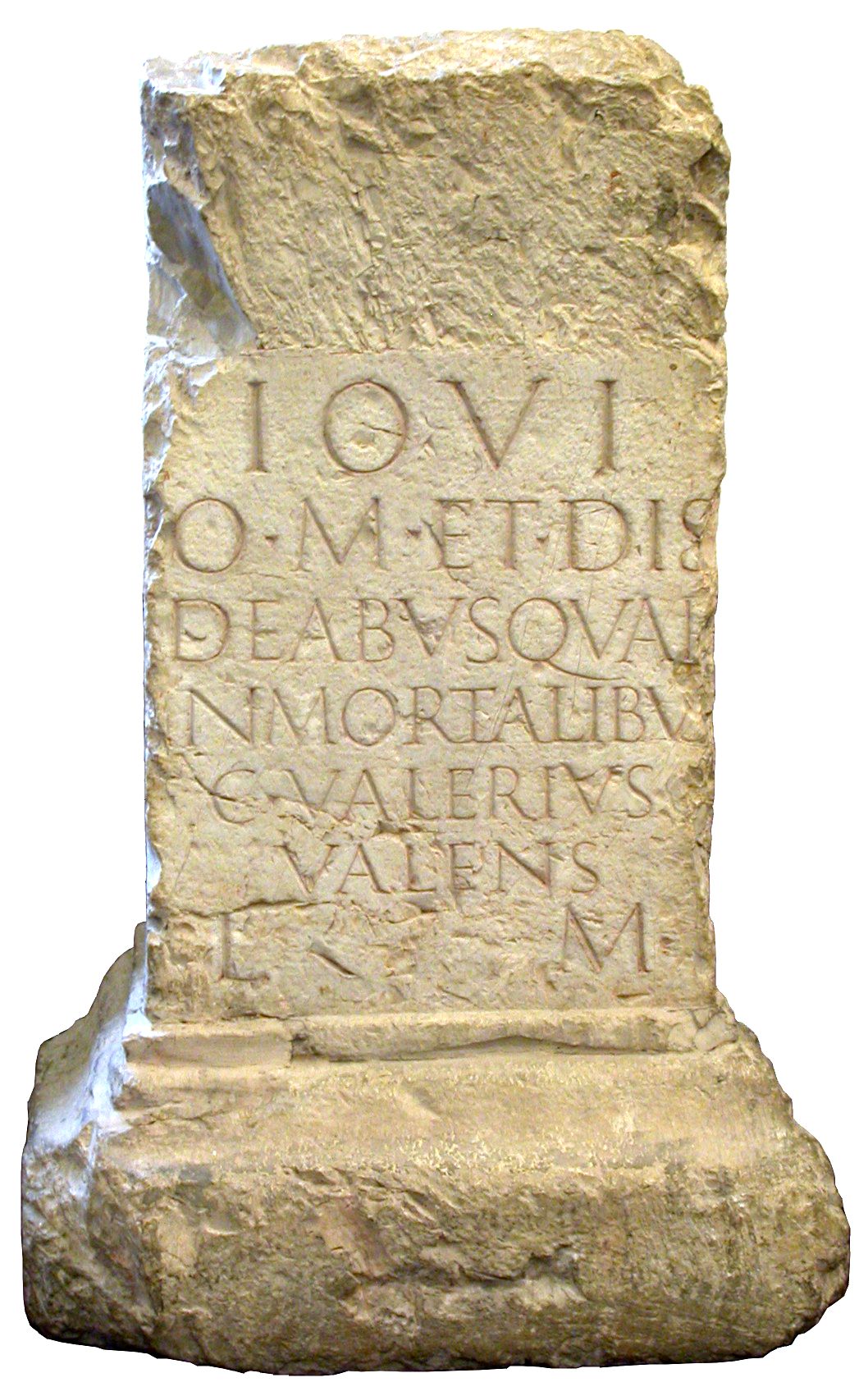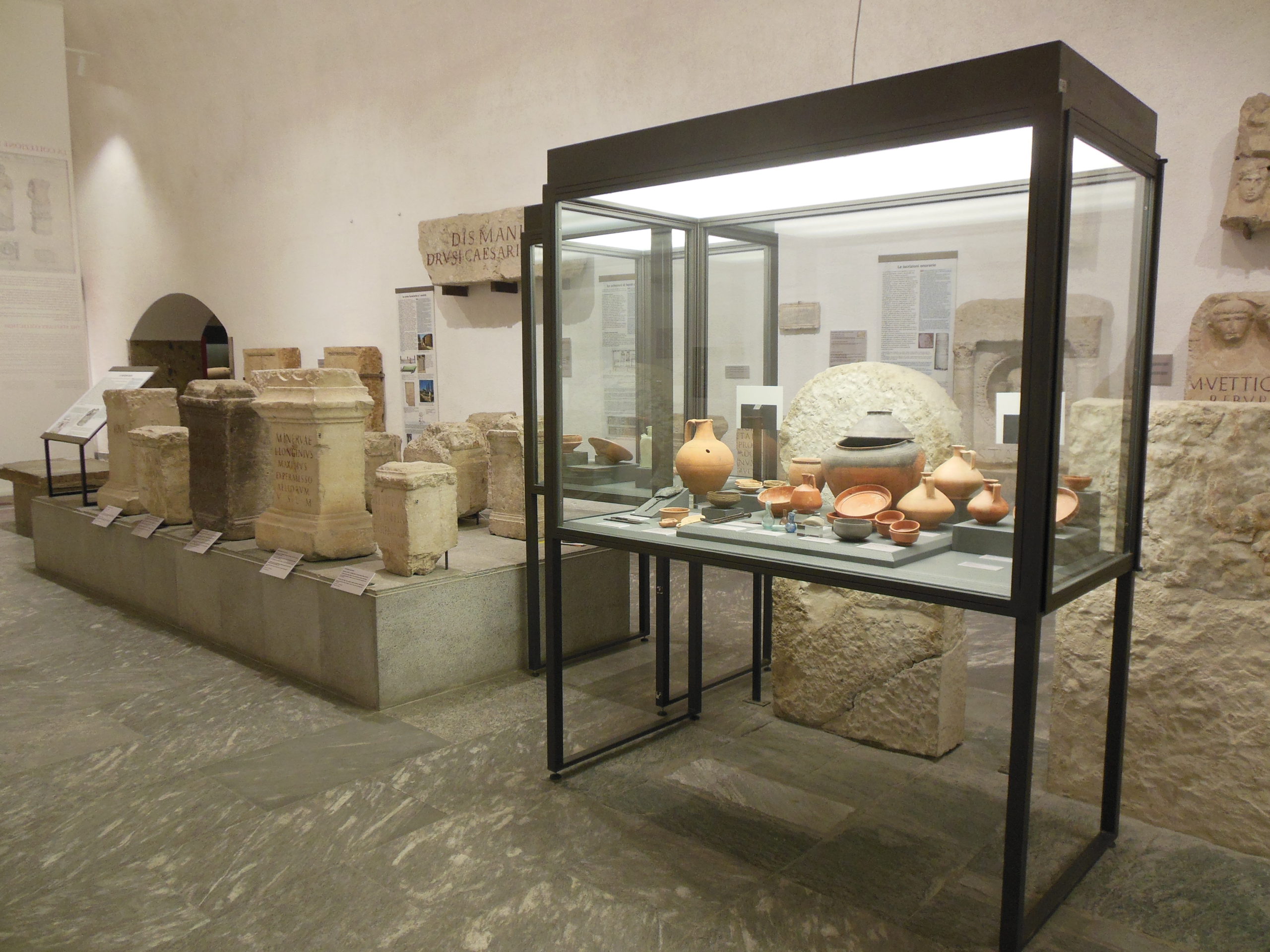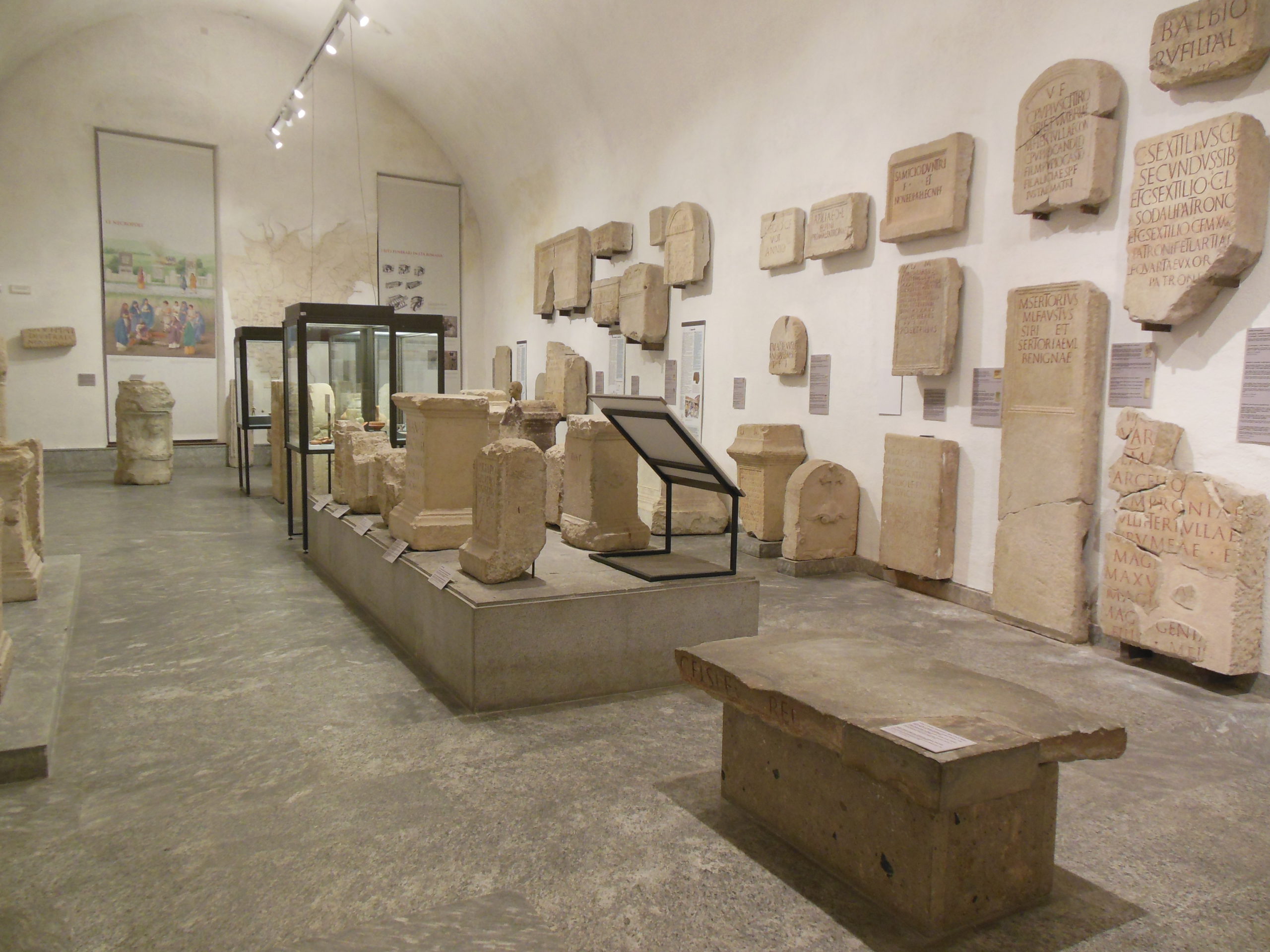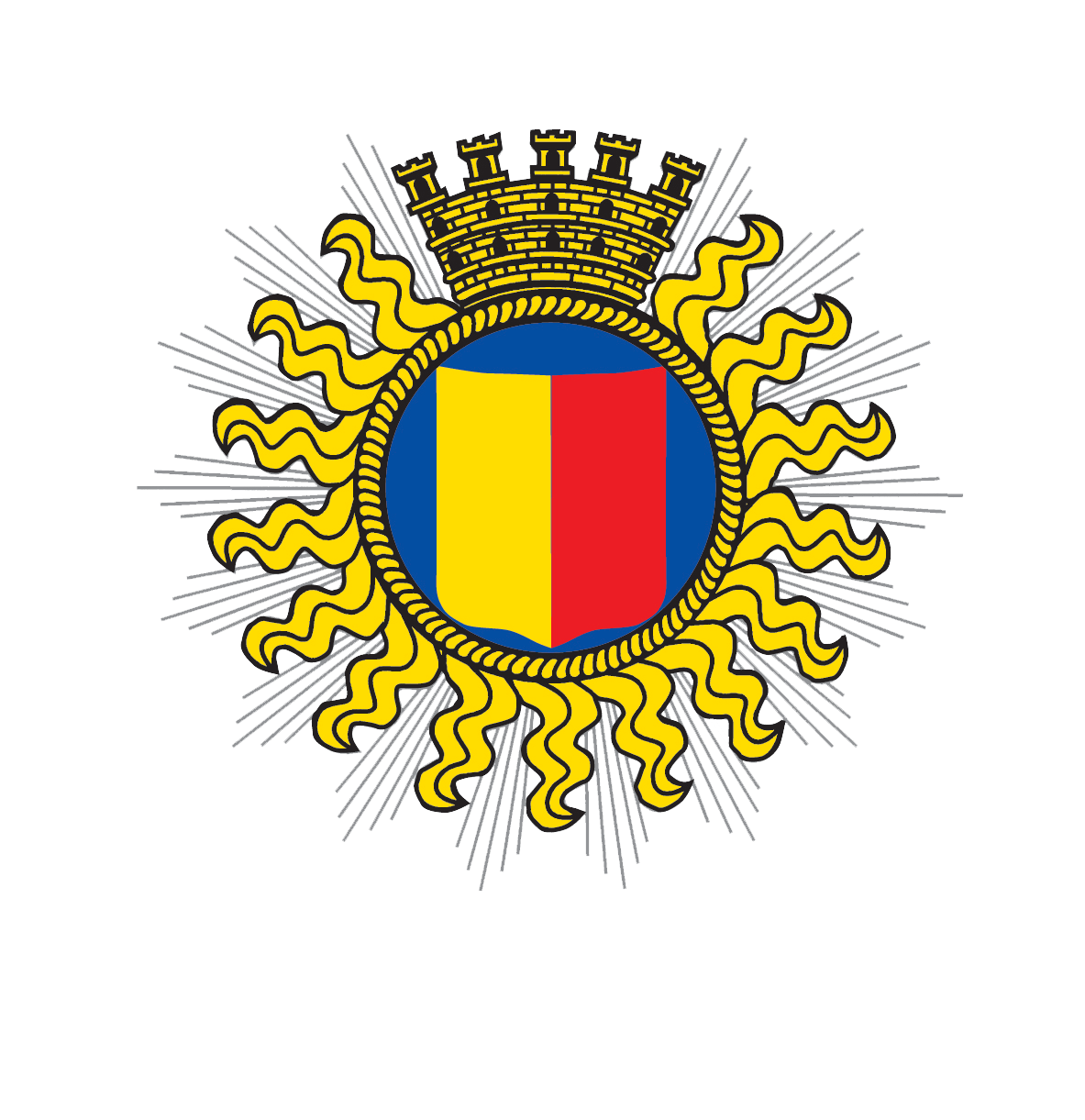The Lapidarium hosts Latin inscriptions discovered around Bergamo and those from the Simoni collection, found in Valcamonica, as well as some Roman grave goods from the Bergamo area.
The inscriptions
Most of the inscriptions are funerary or religious, just a few are honorary.
Funerary inscriptions were placed outside the city wall, along suburban roads, where passers-by would be attracted by their decoration or by their text and might pause to read them: in this way the memory of the deceased was ensured.
Thanks to these epigraphs, we can learn more about the names of ancient inhabitants of the Bergamo area, the public offices they held and the family links between them.
Religious inscriptions are dedications to deities in order to obtain their protection or to thank them for a fulfilled vow or a received benefit. In the Bergamo area they are engraved on private altars used for worship, most of which date back to the first two centuries of the Roman Empire.
Dedications to Jupiter, Minerva, Mars, Mercury, Diana, Juno and Neptune show the spread of official Roman cults in Bergomum and its area. Devotion to some rural divinities persisted, such as Silvanus and Priapus, who had Celtic roots.
Honorary inscriptions mention people of particular merit, living or dead, and were made for display in public places. From Scano (Valbrembo) comes a slab dedicated to the quattuorvir Marcus Maesius Maximus, to whom Pliny the Younger wrote two letters between 103 and 105 AD.
Honorary inscriptions dedicated to members of the imperial family are extremely rare in the Bergamo area; a fragment found in Stezzano belongs to an inscription in honour of emperor Antoninus Pius.


Grave goods from the Bergamo area
During time, many Roman grave goods have been discovered in the territory of Bergamo. In three cremations tombs found in Casazza, dating back to the mid-2nd century AD, there were some remarkable objects, such as a precious amber ring decorated in relief and a terracotta statuette depicting a miniature gladiator.
In Calcinate archaeological excavations have brought to light two beautiful objects, which constituted the grave goods of a cremation tomb of the 1st-early 2nd century AD: a small blue glass amphora and a glass cup with two handles.
The grave goods of some tombs discovered in Zanica are particularly rich in pottery: vases of various shapes were placed alongside glass unguentariums and bronze objects. Among them, a mirror, belonging to a woman who lived between the mid-1st and early 2nd century AD, stand out.




